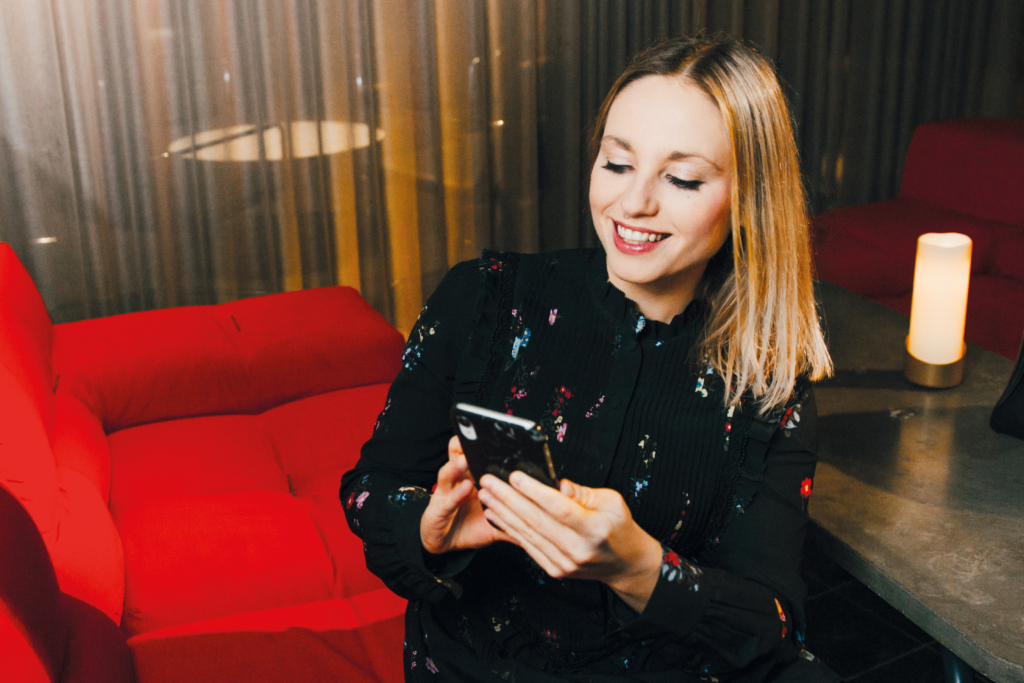For influencers, the people who make money by promoting products to online followers, the line between person and personal brand can be nebulous. Lundagård’s Evan Farbstein takes an unfiltered look at the lives behind the lifestyles.
I used to work with influencer marketing, where part of my job was to find influencers to promote our service. I’d scroll through picture after picture of fluorescent smiles, carefully maintained color schemes, and photogenic food and coffee. These social feeds were overwhelming, sometimes FOMO-inducing, and occasionally inspiring – but were they influential?
Advertisers think so. Business Insider estimates that advertisers will have spent $7 billion on influencer marketing in 2019 by the end of the year, and projects that by 2022 the number will be $15 billion. But the concept of influencer marketing is still relatively new, and there are twists to be navigated in the road ahead, like stricter regulations on labeling sponsored posts. Instagram – the biggest influencer marketing medium, which 79 percent of companies using influencer marketing advertise on – experimenting with hiding likes, which are one of the main ways of determining ads’ success for an advertising medium whose effectiveness is already notoriously hard to measure.
There isn’t a consensus on what an influencer is. Some wide definitions include celebrities and thought-leaders, while more narrow definitions only allow non-celebrity, non-professional people whose blogs and vlogs and Instagrams have a certain number of site visits, views, and followers. Even if the definition is unsteady, there’s a connotation to ‘influencer’ that’s begun to emerge: an archetype, usually female, who takes selfies from a calculated angle and gushes platitudes in a superlative-heavy vocal fry.
Maria Busck, a Malmö-based fashion blogger and self-labeled influencer, acknowledges that some people have a negative association with the term “influencer.” “I always say [influencer] like this,” Busck says, making air-quotes with her hands, “but I wrote influencer [in my bio] because I know companies are searching for it. It’s more because of that than because I feel the term is really me.”
“I feel neutral about [the word ‘influencer’],” says Vicktoria Murawska, another Malmö-based blogger and Instagrammer who refers to herself as “Influencer Entrepreneur” in her Instagram bio. Murawksa went on to note that it felt “a bit weird” to see people with fewer than 1,000 followers calling themselves influencers, but conceded that “even if you influence just one person, you’re influencing that person.”
That’s why the label exists, and how the advertising money is justified: the person attached to it is thought to be influential. I don’t want to get into whether this person is actually influential or not. I want to talk about whether this person is actually a person.
OK, of course an influencer is literally a person – but it’s not that simple. They’re also a brand, a product, that product’s advertisement, and an advertising platform for other products. Because every influencer who does paid collabs promotes two kinds of products. The first, and most obvious, are the products they’re paid to promote. The second product is themself: as someone with good taste, as an authority about a subject, as a trustworthy informer.
The logic is that influencers have established credibility in some niche, and advertisers can buy that credibility. Ideally, influencers actually use and like the products they promote, which results in a triple-win: a win for the influencer who gets paid, a win for the advertiser who sells their product, and a win for the viewer of the ad who gets information on something they’re interested in.
But how often is that the case? One influencer I spoke to for this article on the condition of anonymity estimated that 90 percent of the products they endorsed they actually liked – which leaves 10 percent they don’t.
Every influencer I talked to maintained that they were their authentic selves online.
“I see myself as a person, not a brand,”
“I see myself as a person, not a brand,” says Maria Busck. “I share me, what I like and what I do.”
“[I feel a duty] to be honest,” says Vicktoria Murawska. “I need to stand by what I’m saying. I shouldn’t be lying, or just doing things for money.” She went on to describe how a video post showing her getting a cosmetic injection had caused people to accuse her of being a bad influence on younger followers. Her defense was that she shares what she thinks is right, and it’s up to others to decide if it’s right for them or not.
Both Murawska and Busck said there were limits to how much of themselves they would share. Murawska, despite labeling herself as “#mom” in her Instagram bio, says she avoids featuring too many photos of her daughter because she feels it would be wrong to make money off her child. Busck characterized the content she shares as “personal, but not private.”
But it’s not what influencers refrain from sharing that makes me suspect they aren’t people – it’s what they do share, and how they share it. One influencer I spoke to, when discussing how to gain followers, brought up consistency. They said they had to be consistent with what they posted, otherwise their followers would unfollow them. But what’s more human than change? Personalities change. Personal brands shouldn’t.
I see an influencer as having the same relationship to their online persona as a photo on a restaurant menu has to the dish you’ll be served if you order it – a flattering representation of a real thing, with a financial motive behind the flattery.
The most dangerous aspect of influencer marketing isn’t that it’s advertising, but that it’s pretending not to be. Social media posts are used like Trojan horses, slipping messages into the brains of viewers without them noticing – and there’s research that proves that people have difficulty recognizing sponsored posts as ads, even when they’re labeled as such.
I don’t think the influencers themselves are the problem. The ones I talked to for this article all spoke of the “responsibility” they had to their followers, and seemed aware of the power of their platform. It’s also worth mentioning that the archetype didn’t hold true: not a single one of them took a selfie during their interviews, or gushed platitudes, or spoke in vocal fry. They’re people who – to use an Instagram caption expression – are just out to live their best lives.
But the concept of influencer marketing deserves our suspicion, like anything that tries to influence us.










